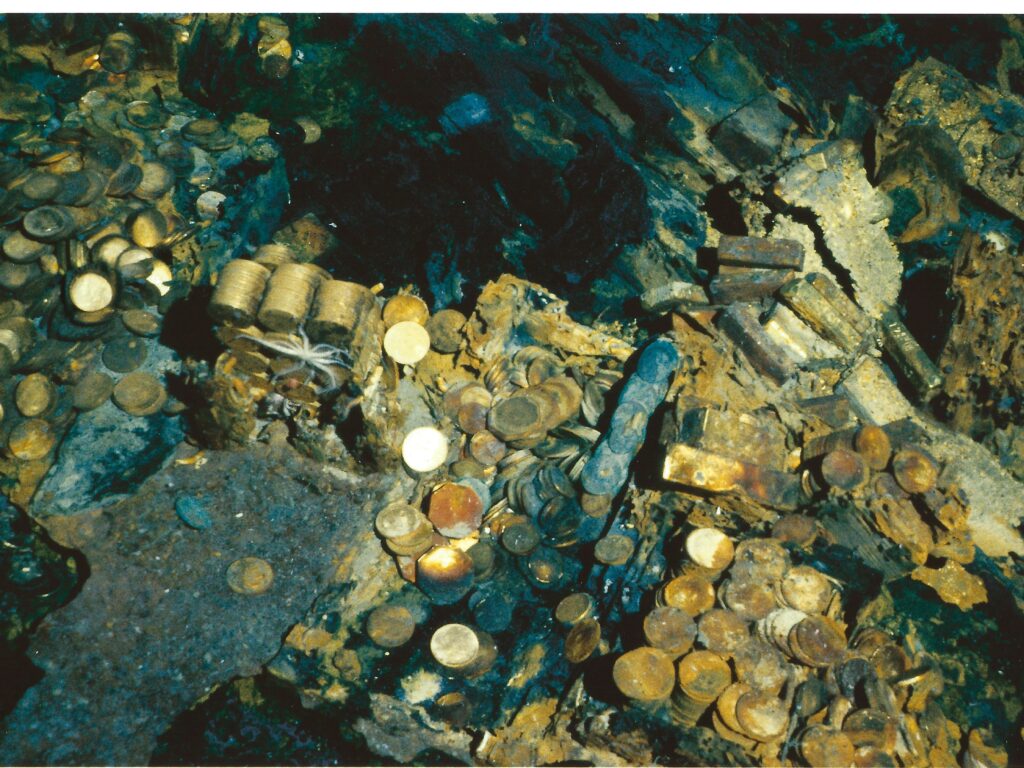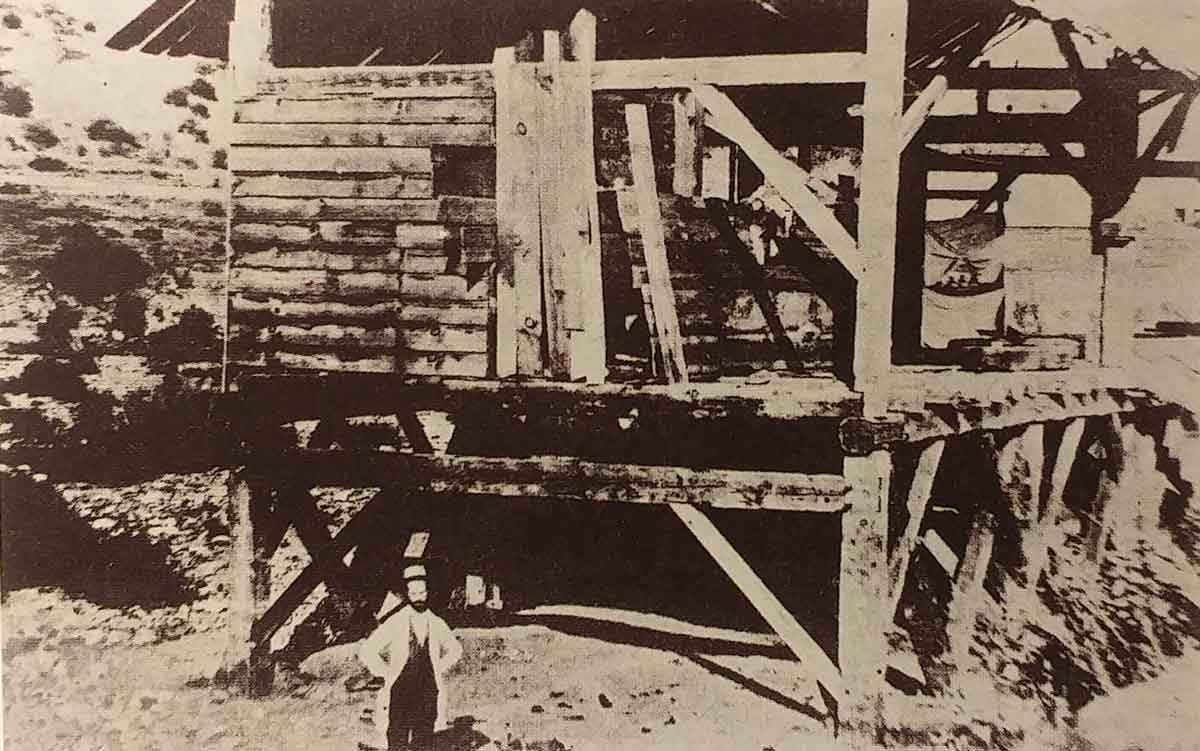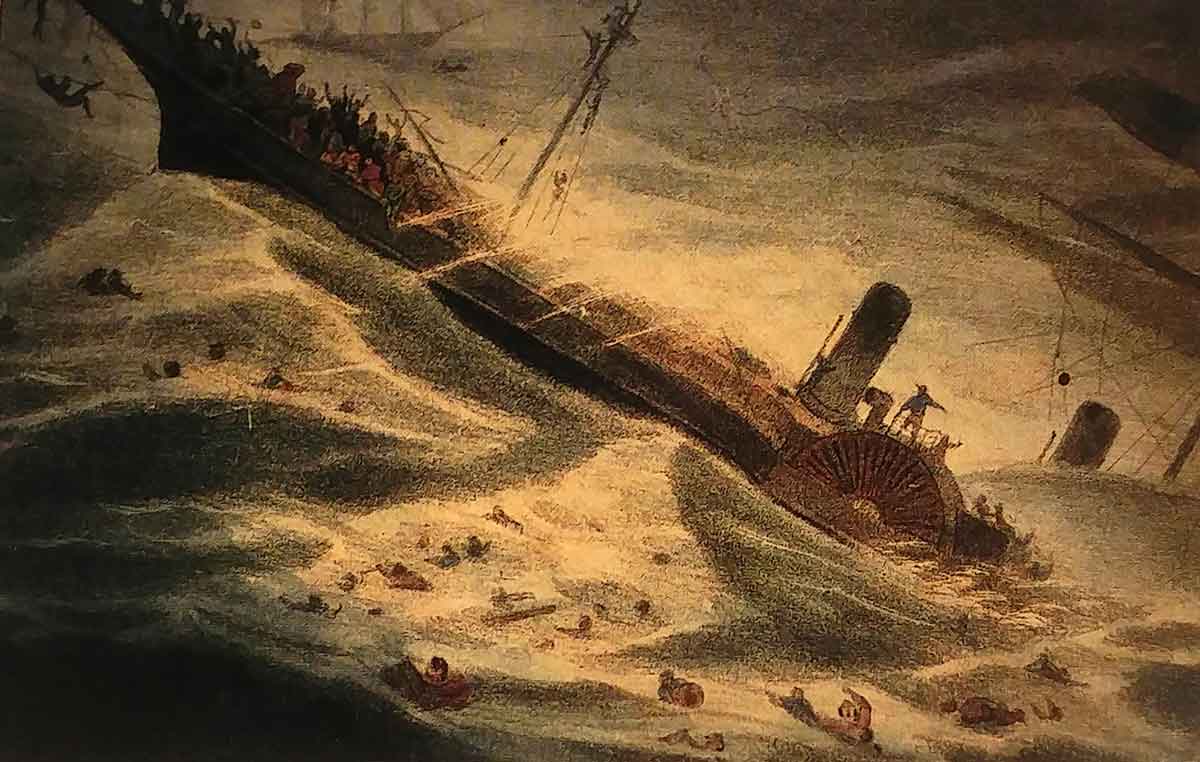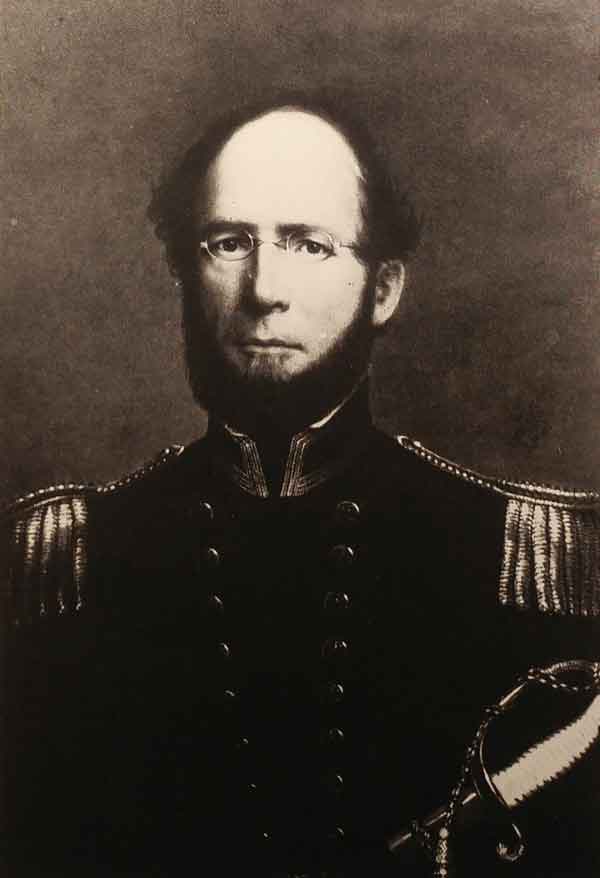
The California Gold Rush
The lure of gold has fascinated mankind since antiquity. Wars have been fought, kingdoms have risen and fallen, and countries have been won and lost because of this precious yellow metal. No other substance has ever captured the imagination and engendered fascination than has gold.
At New Helvetia (New Switzerland) [near present-day Sacramento -ed.], Captain John A. Sutter, a Swiss who had come to California in 1839, managed a fiefdom known as Sutter’s Fort. Seeking to provide a source for lumber, Captain Sutter enlisted James Marshall and several others to explore sites for a sawmill along the American River. Marshall was looking at the water running through the tail race on the morning of January 24, 1848, when he saw a little golden sparkle, a gleaming glint. He reached down, and extracted a small flake.

John Marshall at Sutter’s Mill.
“Eureka!” Or “I have found it,” became the word of the day and, in 1849, was incorporated as the State motto.
To California and Back
It was not until 1850 that one could travel from East to West by sailing ship or steamer and experience any semblance of civilized accommodations.
The overland trip by ox-drawn wagon took about five months in the early days of the Gold Rush. The actual time varied depending on the route taken and the equipment possessed.

Yerba-Buena, or what would soon be San Francisco, just before the California Gold Rush.
The Journey of the S.S. Central America Passengers
On August 20, 1857, several hundred passengers boarded the S. S. Sonora, of the Pacific Mail Steamship Line, and left San Francisco headed south toward Panama City. Aboard was over $1.6 million in gold – thousands of freshly minted 1857-S Double Eagles, some earlier $20 coins as well, ingots, and gold in other forms.
All went well, and in due course, the S. S. Sonora landed at Panama City and the passengers disembarked. The treasure was handled separately and was put aboard a special baggage car on the Panama railroad, a 48-mile line that had been completed in 1855, and since then had facilitated the crossing of the isthmus in about three or four hours. Soon, the train arrived in Aspinwall [now Colón, Panama -ed.], the passengers alighted, and the treasure was carefully transported to storage.
The next leg of the trip was aboard the sidewheel steamer S.S. Central America. Operating under federal mail contract, the steamers of the Atlantic and the Pacific had United States Navy captains at the helm, men of proven reputation and experience. Captain William Herndon, famous in the naval service including for his explorations of the Amazon River earlier in the decade, commanded the S.S. Central America.
Trouble Begins
As the hours passed, a breeze intensified to a strong wind, finally reaching gale force. The S.S. Central America was tossed about in the waves, but continued on her course. By daybreak on Thursday, conditions had worsened, wind was screaming through tattered sails and rigging, passengers remained below deck, and the S.S. Central America was in the middle of a raging hurricane.
On Friday morning, September 11, the crew was still in control, but the steamer had begun to take on water through the drive shaft, some broken or open lights (windows to illuminate the below-deck area), and elsewhere. The ship was tossing violently, making it virtually impossible to feed coal into the boilers.

A contemporary artist’s rendering of the foundering S.S. Central America.
At 11 a.m. Captain Herndon told the passengers that the ship was in danger and enlisted the aid of all men to bail water with a bucket brigade. At one point the ship listed sharply to the starboard (right side), and the captain ordered all passengers to the port side for balance.
At about 1:00 p.m. on Saturday afternoon, the sail of the brig Marine was seen on the horizon. The storm-damaged vessel, under the command of Captain Hiram Burt and ten crew members, drew closer. Aboard the sinking S.S. Central America, Captain Herndon ordered women and children on deck, preparatory to boarding lifeboats. Ladies left behind unnecessary baggage. Some, “as if to illustrate how little value was the gold, brought out bags (not entrusted to the purser) and scattered it on the floor, asking all who wanted money to help themselves.” A few ladies picked up pieces, but none took more than two $20 coins, historian Normand Klare wrote.
The Sinking of the S.S. Central America

Captian Herndon is now a celebrated naval figure. He went down with his ship after doing all he could for his passengers and crew aboard the S.S. Central America.
A few minutes past 8:00 p.m. a tremendous wave hit the S.S. Central America. She shuddered, timbers broke, and with hundreds of men huddled at the front of the ship and Captain Herndon on the starboard paddle-box, she slipped at a sharp angle beneath the waves. Many, including Herndon, went down with the ship, while other clung to wreckage or bobbed about in hollow tin or cork-filled life preservers.
Soon thereafter the S.S. Central America came to rest in the darkness 8,000 feet below the surface, about 160 miles offshore of Charleston, South Carolina. Passenger gold was scattered here and there around the ship’s hulk and the surrounding sea bottom.
And there it would rest for nearly 130 years…
PCGS and the S.S. Central America
The S.S. Central America was given the nickname “Ship of Gold” for her famous cargo: tons of gold from the San Francisco mint and various other gold coins, ingots, gold dust, and bullion from the California Gold Rush. The sinking of the S.S. Central America has been described as the greatest economic catastrophe in U.S. maritime history, contributing to the Panic of 1857 and leading to a severe recession.
Thousands of coins struck predominately by the San Francisco Mint went down with the ship along with 425 passengers and crew, including the ship’s captain, William Herndon. At the time of sinking, the amount of gold carried on board was valued at approximately $2,000,000. Today, that would be equivalent to roughly $300,000,000.
Over 7,000 gold coins were recovered from the S.S. Central America during the shipwreck’s discovery in 1988, exactly 131 years after its last voyage. The S.S. Central America find serves as a unique time capsule of artifacts from a prosperous and significant time in United States history. California Gold Marketing Group (CGMG) is the owner of the second round of treasure recovered from the shipwreck in 2014.